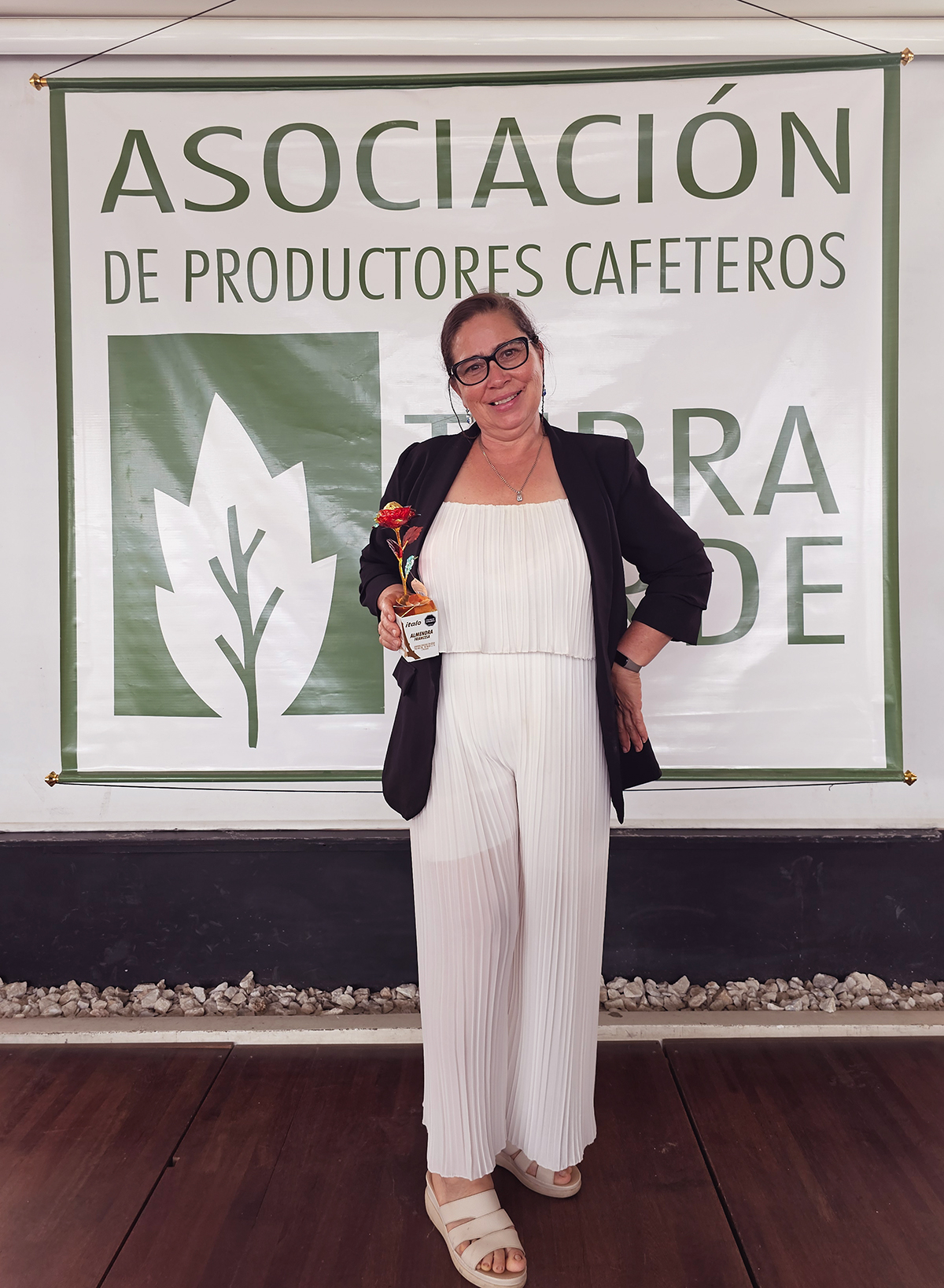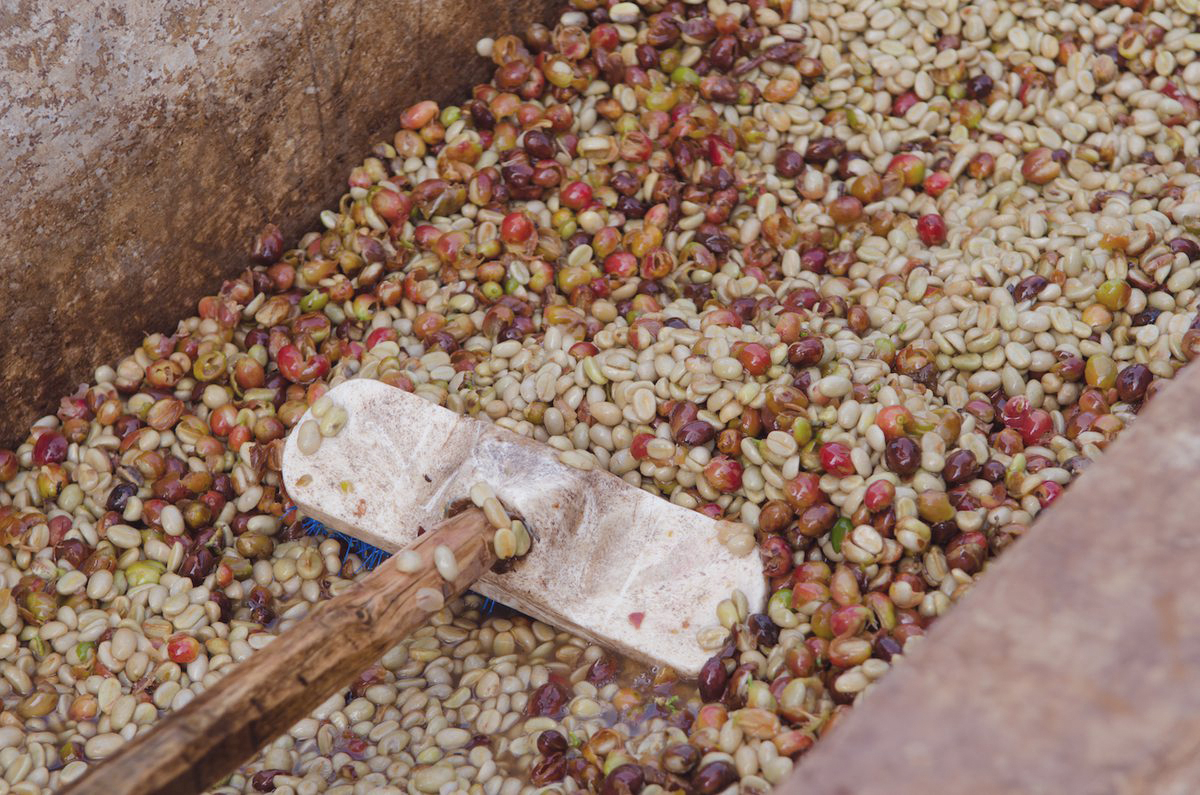







Colombia
250g
Cup Notes: Jasmine, Lavender, Rose, Apricot, Lychee
An extraordinary Colombian Geisha lot of rare elegance: the light acidity contributes to a lively and fresh sensation, while the palate reveals an explosion of floral notes that add a touch of delicacy and depth to the aromatic profile.
Suggested for espresso and filter
when we roast
We freshly roast to order all coffees on Monday, Wednesday and Friday (excluding national holidays), and ship the same day! Cut-off time is 11:59pm (UTC+1) of the day before the roast day. *We only ship whole beans*
Albaney Fajardo, the owner of Finca Renacer, has been working in the coffee industry for about 15 years.
Alongside her husband, she also works with beekeeping.
She manages the beehives, harvesting honey twice a year. Additionally, Albaney operates her small sewing workshop where she spends her days working during the coffee off-season.

Panamanian Geisha was originally collected from coffee forests in Ethiopia in the 1930s. From there, it was sent to the Lyamungu research station in Tanzania, and then brought to the Centro Agronómico Tropical de Investigación y Enseñanza (CATIE) in Central America in 1953, where it was logged as accession T2722.
It was distributed throughout Panama via CATIE in the 1960s after it had been recognized for tolerance to coffee leaf rust. However, the plant's branches were brittle and not favoured by farmers, so it was not widely planted.
The coffee came to prominence in 2005 when the Peterson family of Boquete, Panama, entered it into the "Best of Panama" competition and auction. It received exceptionally high marks and broke the then-record for green coffee auction prices, selling for over $20/pound. There is significant confusion about Geisha because there are multiple genetically distinct plant types that have been referred to as Geisha, many of which share similar geographic origins in Ethiopia.
Recent genetic diversity analyses conducted by World Coffee Research confirm that Panamanian Geisha descended from T2722 is distinct and uniform. It is associated with extremely high cup quality when the plants are managed well at high altitude and is known for its delicate floral, jasmine, and peach-like aromas. The spellings Geisha and Gesha are often used interchangeably, relating to the fact that there is no set translation from the dialects of Ethiopia to English.
The coffee was first recorded in germplasm records with the spelling “Geisha,” and coffee researchers and germplasm banks have mostly maintained that spelling over many decades, leading to that spelling being promoted and used first in the coffee industry. The coffee was originally collected in Ethiopia in a region close to a mountain whose name is most commonly rendered in English as Gesha. Consequently, many in the coffee industry have preferred to rescue that spelling.

On her farm, she harvests Geisha together with her husband: this way she can guarantee that the coffee will turn out as good as she likes it. The cherry is immediately taken to the processing plant to be pulped and passed through a sorting sieve, then left in a concrete tank for an average of 64 hours. After fermentation, it is checked to ensure that it is at the desired fermentation point and washed.
The coffee is dried in the sun for 14-20 days until it reaches the optimal humidity level. The farmer periodically checks a few parchment beans, rubbing them between her hands to reveal the green beans underneath. She assesses their colour and decides when to conclude the drying process. Afterwards, the coffee is tested in the lab to ensure the humidity level meets standards.
